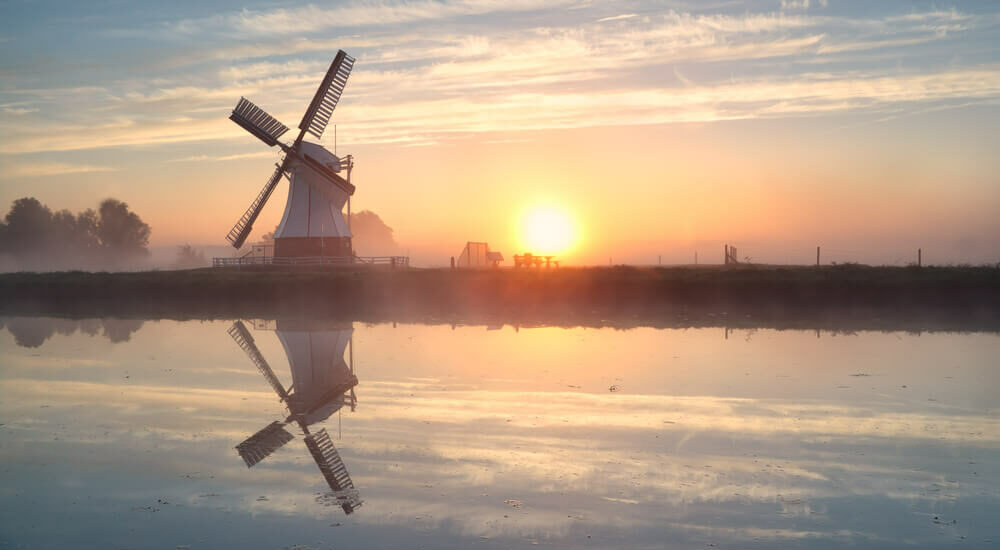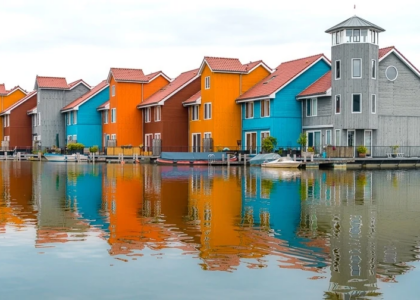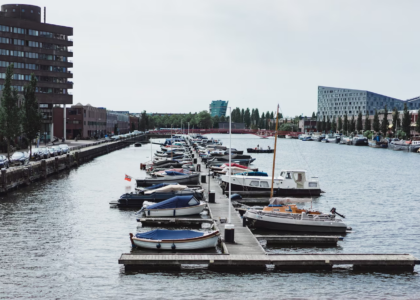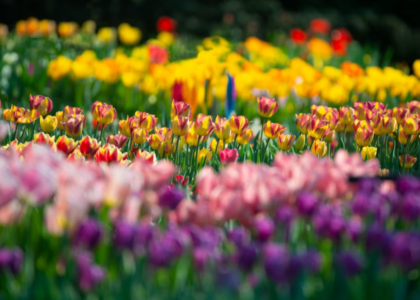Welcome to “”Experiencing Dutch Culture through an Irish Lens: A Personal Journey””! In this blog post, we will delve into the enchanting world of Dutch culture and explore it from the unique perspective of an Irish traveler. Join us as we embark on a personal journey that intertwines the cultural threads of two diverse nations.
Before we get started, let’s get acquainted. My name is [Author’s Name], and I am an avid explorer with a deep passion for culture, travel, and immersing myself in new experiences. Throughout my journeys, I have come to realize the remarkable power of insights gained from stepping into the shoes of others and understanding their way of life.
The Netherlands, often referred to as Holland, is a country vibrant with history, art, and traditions. From the breathtaking landscapes dotted with windmills to the world-renowned Dutch masterpieces housed in iconic museums, this country captivates the hearts of all who visit. Whether you are strolling along the picturesque canals of Amsterdam or admiring the tulip fields in Keukenhof, the rich tapestry of Dutch culture unfolds before your eyes, inviting you to explore its nuanced beauty.
Intriguingly, despite our geographical separation, Ireland and the Netherlands share certain customs, beliefs, and values. Through the course of this blog post, we will uncover these connections that go beyond the surface and discover how the Irish lens offers a fresh perspective on Dutch heritage.
Language and communication play vital roles in cultural immersion. While English is widely spoken in both Ireland and the Netherlands, it is essential to understand the nuances of local communication to truly connect with the locals. We will provide valuable tips on overcoming language barriers and embracing effective communication while navigating Dutch streets.
No discussion of culture is complete without tantalizing our taste buds. Let’s explore the eclectic world of traditional Dutch cuisine, where hearty stamppot and delights like herring and stroopwafels take center stage. Along the way, we will draw parallels to Irish recipes, highlighting the shared penchant for comfort food.
The social fabric and norms in the Netherlands may be somewhat different from Ireland’s, yet they also hold similarities that bring these cultures closer. We will unravel the intricacies of Dutch social etiquette in comparison to Irish customs, revealing surprising commonalities while respecting the divergences.
Setting the scene: Discovering the Netherlands
Picture yourself standing in the heart of Europe, surrounded by fields of vibrant tulips, ancient windmills gently turning in the breeze, and graceful canals weaving through charming towns. This is the Netherlands, a country that holds centuries of rich history, stunning art, and captivating traditions.
History: With its roots dating back to the Roman Empire, the Netherlands has been shaped by diverse influences throughout the ages. From its Golden Age in the 17th century when it thrived as one of the world’s most influential trading nations, to its steadfast resistance during World War II, the nation’s history is one of resilience and innovation.
Art: Immerse yourself in the works of Dutch masters like Rembrandt, Vermeer, and Van Gogh. The Netherlands boasts a vibrant art scene that continues to inspire creativity worldwide. Through elaborate brushstrokes and attention to detail, these artists have captured Dutch landscapes, daily life, and emotions, leaving an indelible mark on the annals of art history.
Traditions: The Netherlands may be small in size, but its customs and traditions carry great significance. From the annual arrival of Sinterklaas and Black Pete, Saint Nicholas’ controversially depicted assistant, to the conical bonnets and wooden shoes worn during folk dances, Dutch traditions reflect an enduring pride in their culture and heritage. Moreover, the Dutch take their firm belief in equality and tolerance seriously, making the country a shining example of an open and progressive society.
- Tulip Mania: In the 17th century, the Netherlands experienced a phenomenon known as “”Tulip Mania,”” when the price of tulips skyrocketed to unimaginable levels. Though that era has long passed, the love and cultivation of tulips continue to be a Dutch signature;
- Windmills: Admire the majestic windmills that dot the Dutch landscape. Once essential for drainage and land reclamation, these iconic structures have become symbolic of the nation’s ingenuity and perseverance;
- Clogs: Step into the enchanting world of Dutch footwear by trying on a pair of traditional wooden clogs. Originally worn for practical reasons in wet and muddy conditions, they are now an iconic symbol of Dutch heritage.
As you embark on your journey through Dutch culture, allow yourself to be captivated by the country’s beauty, its achievements, and the warmth of its people. The Netherlands stands at the crossroads of history, art, and traditions, inviting you to delve deeper into its wonders and embrace its allure.
Finding Common Ground
When embarking on a cross-cultural journey, it is natural to wonder if there will be any familiar aspects or commonalities with the new culture. As an Irish traveler experiencing Dutch culture, I was pleasantly surprised to discover numerous similarities and connections that bridged the gap between these two lands.
- Shared Historical Events: Both Irish and Dutch histories have been marked by struggles for independence and resilience in the face of adversity. From Irish rebellion against British rule to Dutch resistance during World War II, the parallel experiences foster a sense of shared pride in standing up for freedom and sovereignty;
- Celebration of Nature: Whether it’s the lush green landscapes of Ireland or the iconic tulip fields of the Netherlands, both countries have a deep appreciation for nature’s beauty. Outdoor activities like hiking, gardening, and cycling are beloved pastimes, connecting the Irish and Dutch cultures through a shared love for the great outdoors;
- Literary Tradition: Ireland and the Netherlands boast rich literary legacies that have left a lasting impact on the global literary scene. The works of James Joyce and Brendan Behan resonate with Dutch authors like Anne Frank and Cees Nooteboom. The appreciation for storytelling and the written word strengthens the bond between these nations;
- Pubs and Cafés: Both the Irish and the Dutch cherish their local watering holes. Whether you’re sipping a pint of Guinness in a cozy Irish pub or enjoying a frothy Belgian beer in a lively Dutch café, the convivial atmosphere and social bonding in these establishments remind us that humans enjoy companionship and a good chat regardless of where they’re from;
- Love for Sports: The Irish passion for Gaelic games and horse racing is mirrored by the Dutch love for football (soccer) and speed skating. The dedication, team camaraderie, and enthusiastic fan culture surrounding sports unify these cultures in their shared pursuit of athletic excellence and community spirit.
By realizing the similarities and connections between Irish and Dutch culture, I found that exploring Dutch customs and traditions became a transformative experience. Rather than feeling like an outsider, I felt a sense of kinship with the Dutch people, knowing we held certain beliefs and values in common. This shared cultural ground provided a foundation for deeper understanding and appreciation of their way of life.
As you embark on your own cross-cultural adventure, make note of the commonalities you may discover along the way. Such discoveries can help break down barriers, foster empathy, and make the journey all the more enriching as you see the world through a new lens, one that sees common threads woven across diverse cultures.
Language and Communication
When experiencing Dutch culture through an Irish lens, language and communication play a vital role in building connections and deepening cultural immersion. However, language barriers can often pose a challenge. Here are some tips to navigate the language landscape and enhance your cultural experience in the Netherlands:
- Learn Basic Dutch Phrases: While many Dutch people speak English fluently, making an effort to learn basic Dutch phrases goes a long way in building rapport and showing respect for the local culture. Simple greetings like “”hallo”” (hello) or “”dank u wel”” (thank you) can help break the ice and demonstrate your interest in connecting with locals;
- Embrace Non-Verbal Communication: Sometimes words aren’t necessary to understand and be understood. Pay attention to non-verbal cues like body language and facial expressions to decipher meaning and convey your own messages. A smile can go a long way in fostering positive interactions, even when language is a barrier;
- Utilize Language Translation Apps: In this digital age, language translation apps are increasingly handy tools for overcoming language barriers. Apps like Google Translate can help facilitate basic conversations by translating spoken words or written text, making it easier to communicate with locals during your journey;
- Engage in Language Exchange: Consider participating in a language exchange program or finding language exchange events in the Netherlands. These initiatives offer the opportunity to practice language skills with native Dutch speakers while sharing your knowledge of the Irish language or English. It’s a wonderful way to connect with locals on a deeper level and embrace cultural exchange;
- Be Patient and Open-Minded: Recognize that language barriers may exist and be prepared to embrace the moments of miscommunication or misunderstandings as a chance for personal growth and humility. Maintaining a patient and open-minded attitude will help bridge cultural gaps more easily.
By considering the importance of language and adopting these communication tips, you’ll find yourself not only breaking down linguistic barriers, but also creating meaningful connections with locals and truly immersing yourself in Dutch culture from an Irish perspective.
Traditional Dutch cuisine: Delve into the eclectic world of Dutch cuisine
When it comes to exploring a country’s culture, one cannot ignore the delicious flavors and hearty dishes that make up its culinary heritage. In the case of the Netherlands, traditional Dutch cuisine offers a diverse range of flavors and ingredients that are sure to tantalize your taste buds.
The staple dishes of Dutch cuisine offer a glimpse into the rich agricultural history of the country. One iconic dish is Stamppot, a comforting dish consisting of mashed potatoes mixed with vegetables like kale or sauerkraut, and served with a juicy sausage. This hearty meal is reminiscent of Irish colcannon, showcasing the common love for vegetables and potatoes in Dutch and Irish cuisine.
Another beloved dish is Bitterballen, crispy deep-fried meat croquettes filled with a creamy savory ragout. These bite-sized snacks are popular at Dutch pubs and gatherings, analogous to Irish pub food like scotch eggs or chicken wings.
To truly experience Dutch cuisine, you must also try their renowned cheeses. In the Netherlands, cheese-making traditions date back centuries, and their rich, creamy cheeses like Gouda and Edam have gained international recognition. Similar to Ireland, where cheese-making has its own esteemed reputation, the Dutch take pride in their cheese, and it can be enjoyed on its own or paired with bread and a variety of toppings.
Like the Irish, the Dutch also have a love for seafood. Herring, a traditional Dutch delicacy, is typically consumed raw or pickled, served with onions and gherkins. While this might seem different from the Irish preference for cooked fish like cod or salmon, the appreciation for fresh seafood is a coastal tradition that both countries share.
- Dutch pancakes or pannenkoeken are a favorite indulgence, resembling the thin Irish crepes or pancakes. Topped with anything from powdered sugar and syrup to bacon and cheese, these delicious treats can be enjoyed for breakfast, lunch, or dinner;
- Lastly, no exploration of Dutch cuisine is complete without mentioning Dutch pastries. From the famous stroopwafels, thin waffle cookies filled with caramel syrup, to the crispy and buttery appeltaart, or apple tart, Dutch pastries are a delightful treat that can rival any Irish baked good.
As you embark on your culinary adventure through the Netherlands, don’t miss the chance to sample these traditional dishes and draw connections to their Irish counterparts. The shared love for potatoes, vegetables, cheese, and comfort food brings the two cultures together, showing that although the landscapes may differ, the flavors can create a common ground.
Socializing and social norms
When it comes to social etiquette and norms, the Dutch and the Irish may have more in common than you think. Both cultures value warm hospitality, kindness, and a friendly demeanor. However, it is important to note the differences that exist and how they are reflected in day-to-day interactions.
In the Netherlands, directness is highly valued. The Dutch tend to be straightforward and honest in their communication, often saying what they mean without hesitation. This can sometimes come across as blunt or brusque to those from other cultures, including the Irish, who value politeness and politeness. It’s not that the Dutch are rude; rather, they appreciate honesty and efficiency in their communication.
On the other hand, the Irish, known for their wit and charm, often rely on indirect or humorous language to convey their messages. They may use sarcasm or subtle hints to express thoughts or feelings, preferring a more roundabout approach to communication. This can sometimes lead to misunderstandings when interacting with the straightforward Dutch, who prefer clear and direct communication.
Both cultures, however, place great importance on building friendships and camaraderie. In the Netherlands, a strong emphasis is placed on equality and inclusivity. For example, during social gatherings, it is customary for everyone to take turns buying rounds of drinks instead of one person assuming all the expenses. This promotes a sense of community and ensures that everyone is involved in the social experience.
Similarly, the Irish value bonding over shared experiences, such as music, storytelling, and laughter. Irish pub culture is renowned worldwide for its convivial atmosphere and spontaneous music sessions, where strangers become friends through a shared passion for music and fun. This focus on hospitality and creating a welcoming environment is also prevalent in Dutch society, with cafés and bars serving as popular gathering places for both locals and foreigners alike.
Understanding these cultural differences and similarities can help navigate social interactions in the Netherlands. Recognizing and appreciating different communication styles, while emphasizing a willingness to listen and learn, can lead to rewarding social experiences and meaningful cross-cultural connections. So next time you find yourself socializing in the Netherlands, embrace the directness, compliment someone’s straightforwardness, while still keeping your Irish charm intact.
Celebrations and festivals
Being able to immerse oneself in the festivities and celebrations of a foreign culture is a truly enriching experience. In the Netherlands, there are two major events that hold great importance: King’s Day and Sinterklaas.
King’s Day, which is celebrated on April 27th, is a nationwide extravaganza honoring the Dutch monarchy. The streets come alive with joyous celebrations, vibrant parades, and a sea of orange-clad revelers. As an Irish visitor, I couldn’t help but draw connections to our own Saint Patrick’s Day, where green reigns supreme and everyone joins in the festivities.
Sinterklaas, however, is entirely unique to the Dutch culture. Celebrated on December 5th, it revolves around the story of Sinterklaas, a legendary figure similar to Santa Claus. Children eagerly anticipate his arrival and leave shoes out the night before to receive gifts. Witnessing the excitement and joy during this time made me reminisce about Christmas Eve in Ireland, where our children hang stockings by the fireplace to await a visit from Father Christmas.
Comparing these festivities shows how cultures can share common themes while maintaining their individual uniqueness. Both celebrations bring communities together and exemplify the joyous spirit and traditions that define their respective cultures.
Intercultural understanding can be nurtured through exploring these celebrations. By participating, I was able to form meaningful connections with locals and gain insight into their values and history. The shared joy of celebration transcends language barriers and creates lasting memories.
To fully appreciate Dutch celebrations and festivals, it’s important to understand their cultural significance. King’s Day, for instance, originated in 1885 as a way to celebrate Queen Wilhelmina’s birthday. Over time, it has grown into a commemoration of the entire monarchy, connecting past and present generations. On the other hand, Sinterklaas embodies Dutch traditions rooted in history dating back to the Middle Ages.
Reflecting on these celebrations and their similarities to Irish traditions, I came to appreciate the influence of culture on the way we celebrate significant occasions. Embracing the customs of both countries expands our cultural horizons and fosters a greater sense of unity despite geographical distances.
While King’s Day and Sinterklaas may be the highlights of the Dutch festive calendar, there are numerous other celebrations unique to different regions and cities. Exploring these off-the-beaten-path festivities allows for a deeper understanding of Dutch culture and its regional diversity, similar to exploring lesser-known Irish festivals beyond St. Patrick’s Day.
Arts and Entertainment: Shedding Light on Dutch Culture
Dutch arts have been significant contributors to the global cultural scene, showcasing exquisite talent and creativity across various mediums such as painting, literature, and music. From renowned artists like Vincent Van Gogh and Rembrandt van Rijn to influential writers like Anne Frank and Harry Mulisch, the Netherlands has left an indelible mark on the artistic world.
One of the most eminent figures in Dutch art is Vincent Van Gogh. Known for his vivid and expressive paintings, Van Gogh’s masterpieces like “”Starry Night”” and “”Sunflowers”” have captivated millions around the world. His unique style and passionate brushstrokes continue to resonate, inspiring artists from all corners of the globe.
The artistry doesn’t stop with Van Gogh, however. Rembrandt van Rijn, another celebrated Dutch painter, is famous for his remarkable use of light and shadow, notably demonstrated in his iconic work “”The Night Watch.”” With sophisticated technique and pioneering compositions, Rembrandt became a transformative figure in the artistic renaissance of his time.
Beyond painting, Dutch literature also has a strong tradition with acclaimed authors leaving lasting impressions. Established novelist Harry Mulisch, known for his introspective writing and socio-political themes, has received significant recognition worldwide. His books, such as “”The Discovery of Heaven”” and “”The Assault,”” give readers a deep understanding of Dutch culture, history, and identity.
It’s fascinating to note the connections between Dutch and Irish artistic realms. Irish playwright Samuel Beckett, famous for his absurdist plays and existential themes, lived in France for most of his adulthood but was born in Dublin. An important inspiration for Beckett’s later works was the concept of negative space, pioneered by Dutch painter Piet Mondrian. This artistic parallel highlights the extensive reach of Dutch cultural influence.
When it comes to music, the Netherlands has made remarkable contributions, with world-famous opera singer Eva Jessye being of Dutch and Irish descent. The Dutch music scene includes esteemed acts such as Andre Rieu’s Johann Strauss Orchestra, acclaimed for their captivating performances rooted in classical compositions.
To truly appreciate Dutch culture, taking the time to explore these various art forms is a must. From wandering through world-class museums to attending awe-inspiring performances, immersing oneself in Dutch arts unlocks a deeper understanding of the country’s cultural richness. Let the harmonious marriage between Dutch and Irish influences inspire your own creative endeavors.
Exploring beyond Amsterdam
When it comes to experiencing Dutch culture, most people tend to think of Amsterdam as the main destination. While the capital city is undoubtedly beautiful and vibrant, there is so much more to explore beyond its well-trodden paths. To truly immerse yourself in authentic Dutch culture, it’s essential to tread off the beaten path and venture into other cities and regions of the Netherlands.
One off-the-beaten-path destination that embraces both Dutch and Irish influences is the charming city of Utrecht. Located in the heart of the country, Utrecht offers a rich historical experience with its beautifully preserved medieval architecture and picturesque canals. Strolling through its narrow streets, you can discover hidden gems like Dom Tower, the tallest church tower in the Netherlands, and explore the trendy neighborhoods lined with intimate pubs, restaurants, and vintage shops. Utrecht’s vibrant university community also offers a lively art and music scene, which adds an extra layer of cultural exploration.
If you’re looking to experience the countryside, the province of Gelderland is a perfect choice. This region is brimming with breathtaking natural landscapes, including lush forests, rolling hills, and picturesque farmlands. Immerse yourself in Dutch traditions by exploring the Dutch National Open Air Museum, where you can witness historic buildings and traditional crafts coming to life. Don’t miss the iconic Kinderdijk windmills, a UNESCO World Heritage Site, showcasing the country’s rich history and commitment to water management.
Another intriguing destination for culture enthusiasts is the city of Maastricht, located in the southern part of the Netherlands. With its unique blend of Dutch, Belgian, and German influences, Maastricht offers an eclectic mix of architecture, cuisine, and traditions. Explore the city’s cobblestone streets and visit the impressive Basilica of Saint Servatius, dating back to the 6th century. Indulge in a culinary experience by sampling the local delicacies, such as vlaai, a traditional sweet pie, and enjoy wandering around vibrant squares filled with terraces during sunny days.
As you step away from Amsterdam and discover these lesser-known destinations, you’ll gain a deeper understanding of Dutch culture and create unforgettable memories. Immerse yourself in the local traditions, strike up conversations with friendly locals, and embrace the charm of these hidden gems. Remember, traveling is about the journey, not just the destination, so pack your passport, leave the tourist trail behind, and embark on an adventure to experience Dutch culture through a unique Irish lens.
Cultural clashes and observations
During my personal journey of experiencing Dutch culture through an Irish lens, I encountered a few cross-cultural misunderstandings and clashes that taught me valuable lessons. These instances highlighted the importance of understanding and respecting different cultural norms and perspectives. Here are some of the observations I made and the advice I have for readers:
- Directness vs. Politeness: One aspect that initially caught me off guard was the Dutch people’s directness in communication. Coming from Ireland where politeness is highly valued, I found their straightforwardness intimidating at times. I learned that this directness should not be interpreted as rudeness but rather as an indication of honesty and efficiency. My advice to readers is to embrace this cultural difference and not take it personally;
- Personal Space: Another clash I encountered was related to personal space. In Ireland, we tend to maintain a reasonable distance while conversing, whereas in the Netherlands, physical proximity is much closer. At first, I felt uncomfortable when someone stood too close while talking, but I came to understand that it is perfectly acceptable in Dutch culture. Readers should keep an open mind and be prepared for differences in personal space preferences;
- Punctuality: One of the most striking differences between Dutch and Irish cultures is the importance placed on punctuality. In the Netherlands, being on time is highly regarded and considered a sign of respect for others’ schedules. As an Irish person accustomed to more relaxed timelines, I had to adjust and make a conscious effort to be punctual. I advise readers to be aware of this cultural value when planning activities or meetings in the Netherlands;
- Bicycle Culture: The prominence of bicycles in Dutch culture was both fascinating and initially challenging for me. In Ireland, bicycles are less common and the infrastructure for cycling is not as developed. Adjusting to sharing the roads and sidewalks with cyclists took some getting used to. My suggestion for readers is to familiarize themselves with bicycle rules and pay extra attention when crossing roads or walking in busy areas.
Experiencing cultural clashes and observations can be a valuable and eye-opening part of any cross-cultural journey. It allows us to challenge our preconceptions and broaden our understanding of different ways of living. The key is to approach these situations with an open mind and a willingness to learn from them. By respecting and embracing cultural differences, we can make richer and more meaningful connections with people from other cultures.
Conclusion
Throughout this blog post, we have embarked on a personal journey of experiencing Dutch culture through an Irish lens. We have discovered the enchanting similarities and subtle differences between these two vibrant nations, both known for their rich cultural heritage.
By delving into the history, art, and traditions of the Netherlands, we have set the scene for an exploration filled with inspiration. We have come to realize that despite the geographical distance, there is a strong bond between the Irish and Dutch, evidenced by shared customs, beliefs, and values.
- We have explored the importance of language and communication, recognizing that breaking down language barriers is essential for deeper cultural immersion. Follow the simple but valuable tips provided to effectively communicate during your adventures in the Netherlands;
- Delving into the world of traditional Dutch cuisine, we have discovered a mouthwatering assortment of staple dishes, popular ingredients, and traditional recipes. Drawing parallels to beloved Irish recipes, we can see how both cuisines hold elements of home and comfort;
- In the realms of socializing and social norms, we have embraced the unique beauty of both Dutch and Irish customs. By understanding etiquette and navigating differences, we can foster meaningful connections and forge lifelong friendships;
- Celebrations and festivals in the Netherlands have captivated us with their unique charm. Understanding their historical backgrounds, key traditions, and comparing them to familiar Irish celebrations has truly highlighted the tapestry of cultures present;
- Arts and entertainment have also played a pivotal role in our journey. With notable Dutch artists, who have left an indelible mark on the global cultural scene, we have found connectedness and appreciation for the artistic expressions that unite us despite our geographical origins;
- Finally, we have emphasized the importance of exploring beyond the iconic city of Amsterdam to truly immerse ourselves in the authentic Dutch culture. From off-the-beaten-path destinations to hidden gems with both Dutch and Irish influences, these unique experiences are an invitation to form deep connections with a country that goes beyond stereotypes.
In conclusion, we encourage you to embark on your own cross-cultural adventures. Experiencing Dutch culture through an Irish lens has proven to be an enriching and eye-opening experience that allows us to deepen our understanding of the world and celebrate our shared humanity. As you step outside the familiar and embrace new cultural perspectives, may you find joy, friendship, and a deeper appreciation for the incredible diversity we have on this planet.















